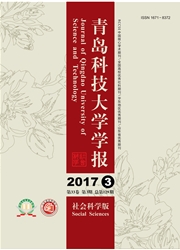

 中文摘要:
中文摘要:
随着经营环境动态性和复杂性的增强,越来越多的企业实施人力资源管理柔性。功能柔性和数量柔性是人力资源管理柔性的两种基本形式。资源观、战略人力资源管理理论、劳动力市场分割理论、交易成本理论、动态组织观和实物期权理论分别从人力资源管理柔性实施的对象、动因、结果、形式和目的等视角给出了各自的理论阐释。
 英文摘要:
英文摘要:
With the rising of the dynamics and complexity of the business environment, more and more enterprises have carried on human resource management flexibility. Functional flexibility and numerical flexibility are the two general dimensions. Six related theories, including Resource-based View, Strategic Human Resource Management, Labor Market Segmentation Theory, Transaction Cost Theory, View of the Dynamic Organization, and Real Option Theory, give their respective interpretation about the object, motives, results, forms and purpose of the implementation of the human resource management flexibility.
 同期刊论文项目
同期刊论文项目
 同项目期刊论文
同项目期刊论文
 期刊信息
期刊信息
